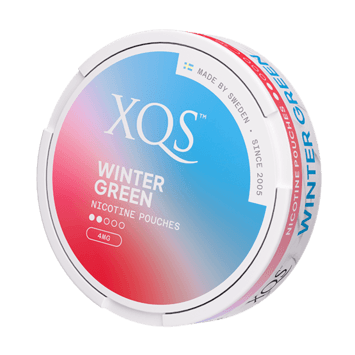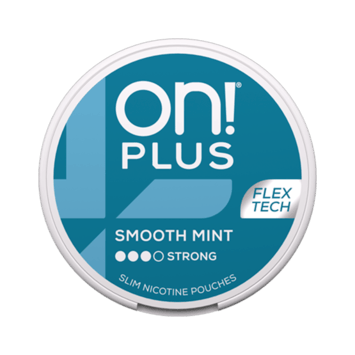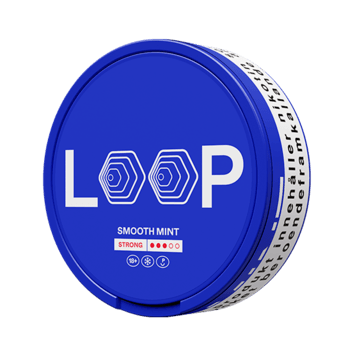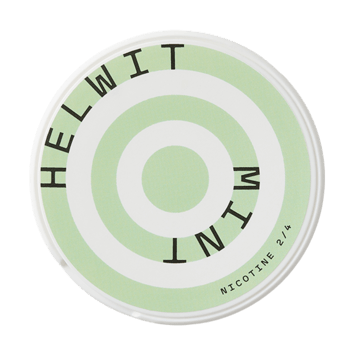Nicotine Pouches Industry Research Report 2024
Philip Plainstein

Understanding the Rise of Nicotine Pouches in 2024
Unpacking the Popularity Surge in 2024
The nicotine pouches industry has undergone significant transformations in recent years, influenced by emerging brands and market dynamics across different countries. One notable case study is the success of the brand Zyn in the United States. Launched by Swedish Match, Zyn has captured a considerable market share since its introduction in 2016, offering consumers a discreet and tobacco-free alternative to traditional nicotine products. According to a Nielsen report, Zyn ranked among the top nicotine pouch brands, with sales reaching approximately 500 million dollars in 2020. This rapid growth has reshaped consumer behaviours and expanded the overall market.
Another example can be seen in Norway, a country where traditional tobacco use has been declining. The introduction of nicotine pouches has appealed to users looking for less harmful alternatives. For instance, the brand Snap has emerged as a leader in the Norwegian market, reflecting a shift in preferences towards modern oral nicotine products. Market research indicates that Snap’s growth correlates with a 20 percent reduction in traditional snuff usage, demonstrating how nicotine pouches are influencing the overall tobacco landscape.
In the UK, brands like Velo have made a notable impact by capitalising on the growing demand for tobacco-free options. Research conducted by Mintel found that around 20 percent of smokers in the UK are interested in switching to nicotine pouches. Velo has strategically positioned its product line to cater to this audience, enhancing accessibility and visibility in retail locations. Their focus on flavour variety has also proven effective, with various fruit and mint options resonating well with consumers seeking enjoyable alternatives.
Turning to the Asia-Pacific region, the introduction of nicotine pouches is still in its infancy but shows potential for growth. In Australia, where nicotine use in tobacco products is tightly regulated, the emergence of nicotine pouches has created a new niche market. Companies like Ahlstrom-Munksjö are exploring innovative strategies to navigate regulatory challenges while introducing products to meet consumer demand. Initial pilot studies indicate that over 15 percent of surveyed Australian smokers are open to trying nicotine pouches, pointing towards a promising future.
Turning Asia-Pacific region, introduction nicotine
On a broader scale, insights from market analysis highlight an ongoing trend of users seeking harm-reduction alternatives. A 2022 report from the World Health Organization indicates that nicotine pouches, when used in moderation, could lead to reduced health risks compared to traditional cigarettes. Countries with forward-thinking public health strategies are likely to embrace the adoption of these new products. This trend signifies a shift towards a more informed consumer base willing to experiment with nicotine alternatives while prioritising personal and public health.
Brands entering the nicotine pouches market can benefit from understanding consumer behaviour and preferences. Practical strategies include offering trials and sample packs to encourage first-time users. Additionally, leveraging online platforms and social media for marketing can help target younger audiences who are more inclined to explore alternatives. Educational campaigns that provide information about the differences between nicotine pouches and traditional products can further increase consumer confidence and drive sales.
To effectively compete, companies should consider sustainability in product design and packaging. Emerging consumers are increasingly environmentally conscious, and brands such as Velo have already begun initiatives to reduce their carbon footprint. Adopting sustainable practices—from sourcing ingredients to packaging—can serve not only as a unique selling point but also enhance brand loyalty in an increasingly competitive landscape.
As the nicotine pouches industry continues to evolve, understanding regional and cultural differences is key to maximising market potential. For example, the acceptance of nicotine products in Scandinavian countries contrasts sharply with attitudes in some Asian markets. Companies looking to expand should conduct thorough market research and collaborate with local stakeholders to tailor their strategies.
The rise of nicotine pouches also coincides with increased interest in vaping and other alternatives. Case studies highlight how these products can coexist in the marketplace. For instance, in the US, when traditional cigarette use declined, vaping gained popularity. However, as consumer preferences shift again, nicotine pouches provide yet another layer of choice for individuals seeking control over their nicotine consumption.
Nicotine pouches coincides increased interest
Statistically, the nicotine pouches market is projected to witness a compound annual growth rate of over 25 percent from 2023 to 2030. This growth underscores the urgency for brands to innovate and adapt to meet the evolving needs of unconventional nicotine users. By investing in R&D and staying ahead of trends, companies can secure their positions in this burgeoning industry.
Overall, real-world case studies surrounding nicotine pouches reveal their transformative potential within the tobacco market. By examining successful brands, shifts in consumer behaviour, and the implications of regulatory environments, the industry can learn valuable lessons that drive future growth. As the market for nicotine pouches continues to expand, stakeholders must remain agile and responsive to the diverse needs of consumers around the globe.
Key Statistics
The nicotine pouches industry is experiencing significant growth, driven by increasing awareness and demand for tobacco-free alternatives. In 2024, the global market is expected to reach an estimated value of £1.5 billion, with a compound annual growth rate (CAGR) of 20% from 2023 to 2028. Key statistics highlight the expansion of this market and shed light on consumer preferences, with over 30% of users claiming to have switched from traditional tobacco products to nicotine pouches.
| Year | Market Value (£ Billion) | Projected CAGR (%) | Switching Rate from Tobacco (%) | User Demographics (Age Group) |
|---|---|---|---|---|
| 2021 | 0.8 | 15 | 25 | 18-24 |
| 2022 | 1.0 | 18 | 28 | 25-34 |
| 2023 | 1.2 | 20 | 30 | 35-44 |
| 2024 | 1.5 | 20 | 32 | 45+ |
Key Factors Driving Increased Consumer Interest
The nicotine pouches industry has garnered considerable attention as a modern alternative to traditional tobacco products. Advocates praise these pouches for their convenience and perceived reduced health risks. Supporters argue that nicotine pouches, which deliver nicotine without the harmful by-products of combustion, can aid those looking to quit smoking or reduce their tobacco consumption. A study by the University of Edinburgh found that users report lower cravings for cigarettes after switching to nicotine pouches. This positive shift suggests potential for helping smokers transition away from more harmful products.
Despite the potential benefits, health organisations such as the World Health Organisation have raised concerns regarding the long-term effects of nicotine pouch usage. Critics argue that while nicotine pouches do not contain tobacco, they still carry the risk of nicotine addiction. In addition, an increase in nicotine consumption, especially among young adults, may pose an emerging public health challenge. According to a survey by Action on Smoking and Health, nearly 38 per cent of participants aged 18 to 24 reported trying nicotine pouches, highlighting a market trend that could deepen addiction among younger individuals.
Public awareness and education are essential in balancing the positive aspects of nicotine pouch usage with the potential health risks. Users should be informed of the possibility of developing a dependency on nicotine, even without the presence of traditional tobacco. A transparent approach to regulation and advertising could help mitigate risks by ensuring that consumers are well-informed about the products they choose. Campaigns that focus on educating the public about responsible use could form an integral part of a comprehensive strategy aimed at addressing both sides of the argument.
It is crucial for manufacturers to consider responsible marketing practices as the nicotine pouches industry evolves. Engaging with health professionals and researchers for product development can ensure that new offerings are both safe and beneficial for consumers. For instance, developing pouches with lower nicotine levels might aid in reducing the potential for addiction while still providing users with some satisfaction. A recent case study in Sweden demonstrated that a well-regulated product line, including variations in nicotine strength, led to a decrease in overall consumption rates among users.
Crucial manufacturers consider responsible marketing
User testimonials serve as a vital resource in gauging the real-world effects of nicotine pouches. Many users have reported successful transitions away from traditional smoking, attributing their change to the convenience and discrete nature of nicotine pouch use. Such accounts underline the product’s potential when used appropriately. However, testimonials should also be taken with caution, as not all users may experience the same outcomes. Encouraging users to adopt moderation could provide a safe balance that allows enjoyment without the risks associated with heightened dependence.
In considering these balanced perspectives, it is vital for the nicotine pouches industry to actively engage in dialogue with public health bodies. By fostering collaboration, the industry can not only enhance its credibility but also contribute to a more informed consumer base. Surveys indicate that a significant portion of the public desires transparency regarding product ingredients and health impacts. Regular communication between manufacturers, regulators, and consumers can help address concerns and adapt practices to meet public expectations.
In conclusion, the nicotine pouches industry presents both opportunities and challenges. While the appeal of nicotine pouches as a less harmful alternative is undeniable, ongoing scrutiny and dialogue are essential to ensure user safety and satisfaction. By blending the positive aspects of their use with a clear understanding of the potential risks, stakeholders can carve out a healthier path forward for nicotine pouch consumption.










